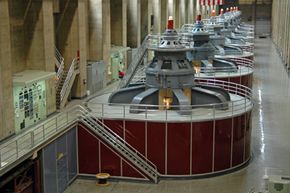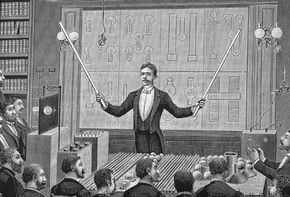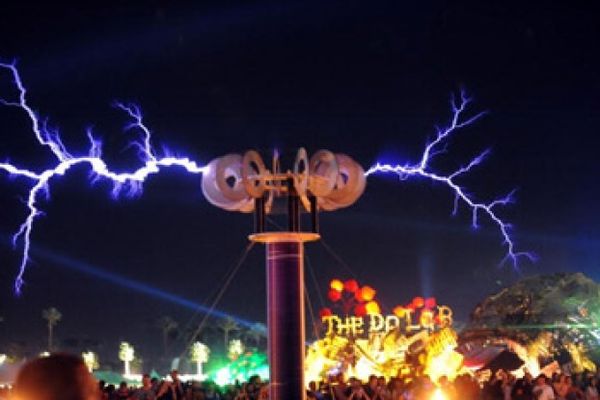Imagine a world without electric light, motors, pumps, fans, refrigerators or elevators. No microwave, no radio or television. The next time you flick a switch, think about Nikola Tesla. More than any other single inventor, Tesla brought the age of electric power into being. But 70 years after his death and a century after his major inventions, his name is less familiar than those of Thomas Edison, Alexander Graham Bell or the Wright Brothers.
Tesla originated the key tools of the age of power: the alternating current generator, the AC motor and the system of electrical transmission. Much of life as it evolved in the 20th century rested on the foundation that Tesla laid down.
Advertisement
Tesla's restless mind carried him beyond these electrical and mechanical innovations. He invented a "magnifier coil," which raised electricity to very high frequencies and voltages [source: PBS]. He found that such current emitted electromagnetic waves, which could do wonders. Today "wireless" is a common term in the world of computer networks. Tesla uncovered the principle more than a hundred years ago.
Tesla's often compared with Thomas Edison, but he was in many ways Edison's opposite. Edison claimed invention was "1 percent inspiration, 99 percent perspiration" [source: Creativecreativity.com]. Yet Tesla was very much a man of inspiration, a visionary. Edison was self-taught; Tesla had received a thorough technical education. Edison solved practical problems; Tesla dreamed of world-transforming technology. Edison commercialized his inventions; Tesla had little business sense. About the only thing they had in common was that both men got by on little sleep: Tesla sometimes worked from 10:30 a.m. to 5 a.m. the next morning [source: PBS].
In his lifetime, Tesla did not receive credit or compensation for many of his inventions. For example, Guglielmo Marconi is credited with inventing radio, but his equipment was based on Tesla's ideas. Only in recent years has Tesla received wider recognition for his deep insights and their impact on modern life. Today, one of the most innovative electric car companies is named Tesla Motors. It's a clue that Nikola Tesla is an inventor worth noting.
Advertisement




